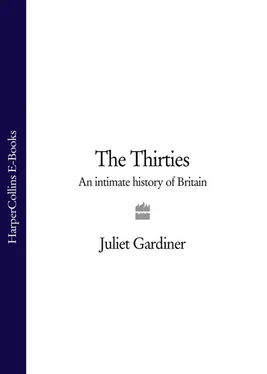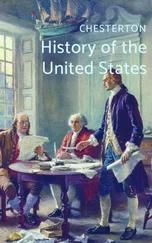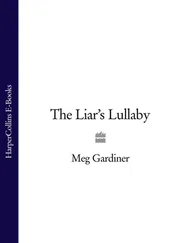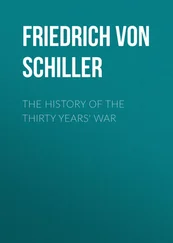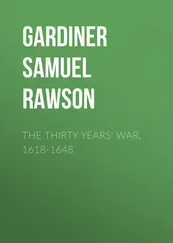The electorate that voted in the second Labour government that year had increased since 1918 by almost 30 per cent to nearly twenty-nine million — 91 per cent of the adult population were now eligible to vote, with women given the vote at the same age as men — twenty-one — rather than thirty, as had been the case when women’s suffrage had first been granted in 1918.
The second Labour government had a small majority and a massive problem: unemployment. The Conservatives had narrowly lost the election campaigning under the slogan ‘Safety First’, copied from a campaign to reduce the number of road accidents. But it seemed that what was needed was less caution, and more action and imagination. The economy was out of balance, with more than a million workers unemployed on average throughout most of the 1920s.
The causes were complex: the war of course was partly to blame. The four years of conflict had cost — in monetary terms — £11,325 million, including loans to allies to help them fight the war; many of these, including those to Russia, would never be repaid. The war was paid for partly out of taxation, partly by liquidating foreign investment, but mainly by loans both from home and overseas. The national debt, which had stood at £620 million in 1914, had risen to £8,000 million by 1924 — the largest slice of it owed to the United States. This led to a vicious spiral: something approaching half the country’s annual expenditure of £800 million went on servicing this debt, meaning that of the revenue raised by income tax, which had risen to an unprecedented five shillings in the pound by 1924, a quarter went towards debt repayment.
Stanley Baldwin, essentially Prime Minister when Ramsay MacDonald was not, that is three times between 1923 and 1937, was a Worcestershire ironmaster whose companies had profited from wartime munitions contracts. Baldwin made an honourable (and discreet) gesture by sending a personal cheque for £120,000 to the Treasury, and there was talk of a national levy. But the problem was not solely debt. The requirements of peace were very different from those of war, and the heavy industries that had expanded to fulfil military needs now found themselves with spare capacity and an export market cut by half, with American and Japanese manufacturers moving into former British markets.
Before the war Britain had been one of the most prosperous countries in the world. After a century and a half of economic growth, expanding trade and shrewd overseas investment, Britain could claim to be among the major industrialised nations and the undisputed hub of international trade and finance. Lancashire cotton mills produced sufficient yarn and textiles to clothe half the world, the shipbuilders of the North-East alone produced a third of the world’s output, Britain was the second largest producer of coal in the world; its merchant fleet accounted for almost half the world’s tonnage, while Britain was a major international creditor with a large inflow of invisible earnings from investments, shipping and insurance.
However, there were serious long-term structural problems that exacerbated the consequences of war. Britain’s prosperity had depended largely on ‘old staples’ — coal, iron, steel, textiles and shipbuilding — which had provided three-quarters of the country’s exports and employed almost a quarter of the working population. At the turn of the century more recently industrialised countries such as Germany and the United States had challenged Britain’s position as the ‘workshop of the world’, and were developing new industries such as chemicals, electrical goods and engineering more rapidly than Britain. The appeal of overseas investment, and a dependence on the Empire as the market for British goods, had led to a neglect of the domestic market and the opportunities offered by these new industries. By 1913 Britain’s economic growth was little more than half what it had been in 1900, and its share of world trade had dropped from a third in 1870 to a seventh by 1914.
The necessities of war boosted Britain’s traditional heavy industries — particularly those linked to the production of munitions and textiles, such as the Scottish jute industry, which was kept at full stretch manufacturing sandbags — and provided a stimulus to accelerate the development of newer ones such as electrical goods, aircraft and motor construction, precision engineering, radio and pharmaceuticals. A post-war boom fuelled by rising prices and the speculative investment of wartime profits lulled people into thinking that the normal rhythms of trade and production would soon be reasserted, and Britain would regain her pre-war markets. Indeed, there was a ‘craze of speculation’ in Lancashire, where old textile mills were bought and sold and new ones constructed in eager anticipation of an export boom, and shipyard owners shared a similar confidence. In 1920 coal still made up 9 per cent of Britain’s exports — only 1 per cent less than in 1913. But the boom was short-lived: by 1921 increases in interest rates and a fall in prices on the world market hit exports, which in turn hit production, and by the winter of 1921–22 more than two million British men and women were unemployed. Cotton textile exports fell to less than half the 1913 figure by 1929, and would never again reach pre-war levels, while coal represented less than 7 per cent of exports: down from 287 million tons in 1913 to forty million by 1922.
It wasn’t only the ‘old staples’ that were in decline: London was losing its pre-war position as the financial capital of the world as the City lost its exclusive authority over monetary policy at home. During the war financial exigencies had forced Britain off the Gold Standard, with the issue of paper £1 and ten-shilling notes that could no longer be converted directly into gold. Financial orthodoxy regarded a return to the Gold Standard as a prerequisite for economic stability: it was essential that the ‘pound should look the dollar in the face’. As far as Lord Bradbury (a former head of the Treasury who chaired a committee appointed in 1924 to advise the newly appointed Conservative Chancellor of the Exchequer, Winston Churchill, on the matter) was concerned, it was not so much a question of whether the pound was overvalued in relation to the dollar, as of removing monetary policy from political influence: in his eyes the Gold Standard was ‘knave-proof’. The Governor of the Bank of England, Montagu Norman, agreed: the Gold Standard was the best ‘Governor’ a fallibly human world could have. It was ominously portentous that the notion of the government ‘meddling’ in economic matters was regarded with suspicion and distaste. On the whole gold occupied the same iconic position for the Labour Party, and it was left to the economist John Maynard Keynes, who in The Economic Consequences of Winston Churchill (a title resonant of his Cassandra-like warnings of the effects of harsh reparation payments imposed on Germany in 1919, The Economic Consequences of the Peace) , published in 1925, to put the case against, or rather to point out the consequences if the Gold Standard was re-embraced. These included rising unemployment as the bank rate rose and cheap money was denied for industrial investment. In 1925 Britain went back onto the Gold Standard: the bank rate averaged 5 per cent for the rest of the decade, making the country uncompetitive in the world market, particularly against the United States, which was enjoying boom conditions at the time.
How far and how deep would the pernicious stain of unemployment, which throughout the 1920s had never been less than a million, spread? How could men earn a living when the great staples on which Britain’s industrial might had been built over nearly two centuries — iron, steel, textiles, coal, shipbuilding — were losing out to competition from Europe and the United States?
Читать дальше
